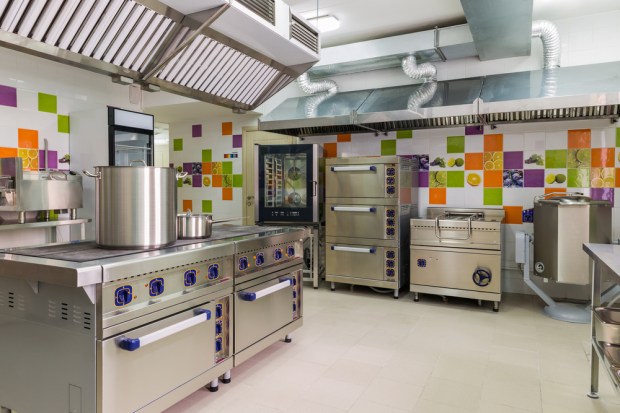TransAct Enables Back-Of-Restaurant Automation

The back of the restaurant is starting to see the benefits of digital transformation.
Historically, technology and automation innovation in the restaurant space have focused on the front of the house, especially in the realm of order management, said Miguel Ortiz, director of marketing for restaurant solutions at technology and printing solutions company TransAct.
While in-store order management services have ridden the wave of digital transformation, expanding to encompass online, mobile and order ahead in the QSR space, back-of-house processes have, for the most part, remained manual.
But the tide is turning. TransAct recently released the latest version of their Accudate line of labeling solutions, the Accudate XL, which Ortiz spoke to in the larger context of the roles automation, integration and technology will play as back-of-house restaurant operation management catches up with what’s going on out front.
For its part, TransAct’s Accudate line enables restaurants to automate prep and food safety processes — procedures which, when handled manually, are prone to human error.
Every prepared item in a kitchen has its own specific storage requirements and expiration information. In an analog kitchen, employees need to perform calculation and write out labels for each item to comply with food safety standards. It’s a lot of data and variables to handle.
“It’s a recipe for mistakes,” Ortiz said. “There have been some high-profile incidents where customers have gotten sick. In today’s world, you have to protect your brand, your customers and give employees the tools to do the best job that they can.”
TransAct’s first Accudate system, launched in 2013, integrated menu information, food safety requirements and expiration data, enabling restaurants to automate the labeling process. Managers could update menu items via USB. Subsequent versions enabled wireless capabilities.
Now, Ortiz said, the company, along with other back-of-house technology and software providers, have reached a point where they’ve begun to partner to create highly integrated systems.
The latest iteration of TransAct’s back-of-house labeling technology, called Accudate XL, features integration with back-of-house productivity software Jolt and enterprise restaurant management solution Crunchtime.
These integrations and connectivity updates enable TransAct’s terminal to act as a back-of-house data hub on top of its other functions. The Crunchtime integration allows automation of inventory and prep management and Jolt’s integration adds the ability to automate employee task management.
“Regional managers or corporate can log on and administer new menus and all the information that they’ve entered, if they’ve changed the ingredients or the price, is immediately updated,” Ortiz said. “From a productivity and logistics perspective, they don’t have to manually keep track of their labels, stock, changes in ingredients and pricing.”
This functionality comes in handy when changing labels on grab-and-go items, for example, or having to comply with the latest FDA labeling regulations. In both cases, pre-printed labels would need to be scrapped — now, restaurants can produce custom labels on demand.
From here, Ortiz said, back-of-house solutions are headed toward the natural endpoint of digital transformation: big data. Moving forward, restaurants will leverage data analytics and the internet of things to their advantage.
“Up until now, the back-of-the-restaurant hasn’t been data intensive,” he said. “If an item, for example, is no good or expired, it’s something that an employee has to spot. In the future, missing that won’t be an excuse — because there are plenty of technologies now, all cloud-based, to allow a restaurant to notice things that are out of line and to be able to make corrections.”
Where back-of-house automation and data insight will affect restaurants the most, Ortiz said, is in the restaurant’s bottom line.
“One of the biggest things that you can do to increase the profitability of a restaurant is to manage waste,” Ortiz said. “If you can help improve rates by 3 percent, it just adds so much to the bottom line.”
Outside of waste management, he said, IoT monitoring and automation will work to allow restaurants to track and aggregate all of their operational data.
For enterprises with multiple locations, this will also mean an enhanced ability to track best practices and to use that data to improve operations at under-performing units.
